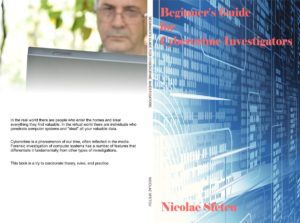 London, the only city to have hosted the Olympics three times (1908, 1948, 2012), is dynamic and very diverse culturally. It plays an important role in art and fashion. It receives 28 million tourists per year and has four sites in World heritage and numerous iconic landmarks: the Palace of Westminster, Tower Bridge, Tower of London, Westminster Abbey, Buckingham Palace, and renowned institutions like the British Museum or the National Gallery.
London, the only city to have hosted the Olympics three times (1908, 1948, 2012), is dynamic and very diverse culturally. It plays an important role in art and fashion. It receives 28 million tourists per year and has four sites in World heritage and numerous iconic landmarks: the Palace of Westminster, Tower Bridge, Tower of London, Westminster Abbey, Buckingham Palace, and renowned institutions like the British Museum or the National Gallery.
CONTENTS:
London
– Geography
– – Definition of London
– – Relief and hydrography
– – Districts
– – Urbanization
– – Climate
– History
– – London in Roman times
– – The Anglo-Saxon occupation
– – Medieval London
– – The modern times
– – The contemporary era
– Policy and Administration
– – Local administration
– – Postcodes in London
– – National administration
– – Twinning
– Demography
– – Population
– – Demographic evolution
– – Ethnic diversity
– – Residents born abroad
– – Religion
– Economy
– – Attractiveness
– – Services and finance
– – Tourism
– Lines of communication and transport
– – Rail transport
– – Truck transport
– – Air transport
– – River transport
– Education
– Culture
– – Entertainment
– – Arts
– – Museums
– – Music
– – Sport
– Media
Local government
– London Assembly
– – Composition
– – Presidency
– – Constituencies
– City of London
– – Institutions
– – – The Wards
– – Heraldry
– – An economic and financial center
Geography
– Metropolitan area
Economy
– London Stock Exchange
– – History
– – – Strategic alliances
– Port of London
Buildings and structures
– The tallest buildings
– – Lists
– – – Skyscrapers
– – – Other structures
– – – Comparison chart
– – – Future buildings
– – Other famous structures
– Tower of London
– – Crown jewels
– – Menagerie
Transport
– Air network
– – Aircraft
– – Gondola lift
– Subways and trams
– – London Underground
– – Docklands Light Railway
– – Tramway (Croydon Tramlink)
– Rail network
– – London Overground
– – Commuter trains
– – Outlines
– – International connections
– – Airports connections
– Road network
– River network
– London Underground
– – The metropolitan network
– – – The lines
– – – Stations
– – Culture
– – – The metro map
– – – The roundel
– – – Contribution to the arts
– Bridges
– – River Crossings
– – – River Thames
– – – River Lea
– – – Subterranean rivers
– – – Canals and Docks
– – Road and foot bridges
– – Railway bridges
Culture
– Annual events
– – Major annual events in London
– Museums
– Public art in the City of London
– – Aldgate
– – Bank
– – Blackfriars
– – Broadgate / Liverpool Street / Bishopsgate
– – Cannon Street
– – Fenchurch Street
– – Fleet Street
– – Holborn
– – Moorgate
– – St Paul’s
– – Temple
– – Tower Hill
Education
– Universities and higher education colleges in London
– – Specialised and private universities and higher education colleges
– – Foreign universities
Tourism
– Get in
– – By plane
– – – Airports
– – By boat
– – By train
– – By bus
– – By car
– Get around
– – By train
– – By metro
– – By tram
– – – Oyster card
– – By bus
– – By taxi
– – By car
– – By bike
– – Walk
– See
– – Religious buildings
– – Parks
– – Museums
– – Royal Parks
– – – Administration
– Tips
– – Learn
– – Buy
– – Eat
– – Market towns
– – What to do
– – – Drink
– – – Public events
– – – Bars
– – Concerts
– – – Nightclubs
– – Sleep
– – – Cheap
– – Go next
– – Gentlemen’s clubs
References
About the author
– Nicolae Sfetcu
– – By the same author
– – Contact
Editura
– MultiMedia Publishing
MultiMedia Publishing House https://www.telework.ro/en/e-books/london-business-travel-culture-short-guide/




